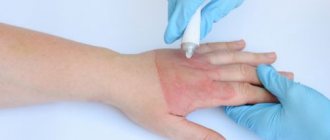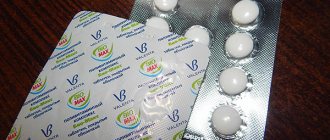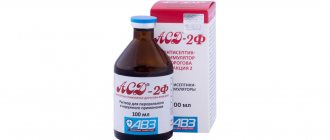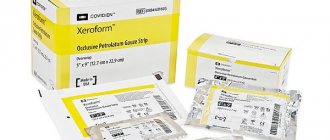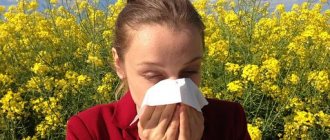Compound
| Elixir | 100 ml |
| active substances: | |
| licorice extract thick | 20.7 g |
| (with glycyrrhizic acid content 14%) | |
| anise oil | 0.34 g |
| ammonia solution concentrated 25% | 1.38 g |
| (equivalent to 0.345 g of ammonia) | |
| excipients: ethyl alcohol (ethanol) 90% - 20.41 ml; purified water - up to 100 ml |
Breast collection No. 3, instructions for use: method and dosage
Breast collection No. 3 for cough is taken orally as an infusion.
To prepare it, pour 2 tablespoons (about 10 g) of the raw material into an enamel container and pour 1 cup (200 ml) of boiling water, then cover with a lid and heat in a water bath for 15 minutes. After this, the infusion is cooled for about 45 minutes at room temperature, filtered, and the remaining raw materials are squeezed out well. Boiled water is added to the resulting aqueous extract to bring the volume to 200 ml.
Infusion of Breast Collection No. 3 is taken warm 3 times a day, ½ cup (after meals). The duration of treatment is 2–3 weeks. The infusion must be shaken before use.
Pharmacodynamics
The expectorant effect of the breast elixir is due to the action of its constituent components:
— thick licorice extract has anti-inflammatory and expectorant properties, which are associated with the content of glycyrrhizin, which stimulates the activity of the ciliated epithelium in the trachea and bronchi, and also enhances the secretory function of the mucous membranes of the upper respiratory tract;
— anise oil has an expectorant effect due to the content of anethole in the oil, which promotes reflex stimulation of breathing, increased activity of the ciliated epithelium of the respiratory tract and increased secretion by the mucous membrane of the larynx, trachea and bronchi;
- ammonia has an irritating effect, which leads to excitation of the endings of sensory nerves in the upper respiratory tract and reflex stimulation of the respiratory center.
Pharmacological properties
Infusion of Chest Collection No. 3 has a pronounced anti-inflammatory and expectorant effect due to the herbal components included in its composition:
- licorice roots [saponin glycyrrhizin ~ 23%, bitter substances ~ 4%, essential oil - in trace amounts, resinous substances - 3-4%, vitamins, proteins and lipids - up to 4%; polysaccharides (consisting of pectin substances and starch) – 4–6%, monosaccharides and disaccharides – up to 20%, flavonoids – 3–4%]: the expectorant properties of licorice are determined by the presence of glycyrrhizin in its roots (it is 50 times sweeter than sugar and gives the root licorice has a sickly sweet taste), which stimulates the activity of epithelial cilia in the trachea and bronchi, promoting the growth of secretory activity in the mucous membranes of the upper respiratory tract. The anti-inflammatory effect of licorice is due mainly to glycyrrhizic acid, released during the hydrolysis of glycyrrhizin, and it manifests itself in a kind of relief of inflammatory reactions;
- marshmallow roots [mucus – 30–35%, monosaccharides (D-glucose, DL-xylose), glucuronic acids, methylpentoses and hexoses; The composition of dry mucus includes reducing polysaccharides (in terms of glucose) – 19.52–21.68%, linear polysaccharide triticin – 5–11%, invert sugars – up to 78%, tannins – 4.11–7.96% , essential amino acids (including asparagine) – 0.8–2%, betaine – up to 4%; starch – 37%, pectin – 11–20%), fat – 2%, organic acids, carotene]: due to the high content of heterogeneous mucus, the roots of the plant have an enveloping, expectorant, anti-inflammatory and slight analgesic effect. Modern pharmacological nomenclature classifies marshmallow roots into the group of antitussives. A decoction of the roots, thanks to its mucous consistency, moistens the vocal cords, entering the trachea, softens the dense coating on its walls, protects the nasopharynx and trachea from irritating factors, accelerates the regeneration of affected areas of the mucous membrane, and facilitates expectoration;
- fruits of anise [fatty oils – 8–30%, essential oil – up to 6%. The composition of the essential oil includes anethole - 80–90%), methyl chavicol (estragole, para-allylanisole) - 10%, anisaldehyde, anise ketone and anisic acid, giving it a characteristic aromatic odor and sweet taste]: anti-inflammatory, antispasmodic and expectorant natural a means that improves the liquefaction and expectoration of mucus, accelerates the evacuation of secretions and products of inflammation of the mucous membrane from the respiratory tract, and has a bactericidal effect. Anise preparations demonstrate the greatest therapeutic effectiveness in the treatment of respiratory diseases complicated by bacterial infections;
- Salvia officinalis leaves [essential oils – up to 2.5% (including cineole – up to 15%, α- and β-pinene, linalool, thujone, borneol and its acetate, linalyl acetate and other terpene compounds), tannins, vitamins P and PP, flavonoids, alkaloids, resinous compounds, triterpenoids (ursolic and oleanolic acids, diterpene salvin), phenolcarboxylic acids (including caffeic and rosemary), bitterness and phytoncides]: main beneficial properties - antimicrobial, astringent and anti-inflammatory , are due to the pharmacological effectiveness of the active substances contained in the leaves;
- Scots pine buds [essential oils – 0.36% (including limonene, pinene, bornyl acetate, borneol, cadinene) resins, tannins, starch, bitter substance pinicicrin]: have a stimulating effect on the secretory activity of the mucous membranes of the upper respiratory tract, thereby promoting the liquefaction of viscous mucus in the bronchi, have an expectorant effect, which is also due to stimulation of the cilia of the epithelium of the mucous membranes, at the same time they have a bactericidal effect on pathogenic microflora in the oral cavity and oropharynx.
special instructions
The drug contains 90% ethyl alcohol. The content of absolute ethyl alcohol in one drop of the drug is 0.0075 g, in the maximum single dose for adults - up to 0.3 g, in the maximum daily dose - up to 1.2 g.
Impact on the ability to drive vehicles and engage in other potentially hazardous activities. During the treatment period, care must be taken when driving vehicles and engaging in other potentially hazardous activities that require increased concentration and speed of psychomotor reactions.
Release form and composition
The drug is available in the form of a crushed collection, which is an aromatic yellowish-gray mixture of heterogeneous particles of whole fruits and plant materials interspersed with white, yellow, brown, yellowish-brown, grayish-brown, yellowish-orange and dark brown. The aqueous extract is slightly slimy and has a bitter-sweet-spicy taste.
The collection is packaged in 35 g or 50 g in cardboard packs with an inner plastic or paper bag; the text of the instructions for use of Breast Collection No. 3 is printed on the pack or inserted inside the cardboard box.
Breast collection No. 3 includes:
- licorice roots – 28%;
- marshmallow roots – 28.8%;
- common anise fruits – 14.4%;
- Salvia officinalis leaves – 14.4%;
- Scots pine buds – 14.4%.
Reviews about Breast collection No. 3
According to reviews, Chest collection No. 3 is a natural and effective remedy for treating cough. Patients note that the drug is an indispensable aid for diseases of the upper respiratory tract, quickly cures cough, and is absolutely harmless.
However, according to some users, the product is not very effective for severe diseases and does not provide quick results. Another disadvantage is that it is contraindicated for use in children under 12 years of age and pregnant women. The taste of the infusion is quite specific and not all patients like it.
Directions for use and doses
Breast preparation 3, the composition and properties of which continue to be popular to this day, should be brewed only after reading the instructions. And consultations with a doctor who will select the dosage based on the individual characteristics of the patient’s body and the degree of neglect of the disease.
The recipe for preparing the product consists of several stages:
- Pour 2 tbsp into a clean metal container. spoons of chopped herbal mixture, pour boiling water over it.
- After the resulting liquid has been brought to a boil, reduce the heat and leave to simmer in a water bath for 15-20 minutes. Leave the broth for 45 minutes to cool and brew.
- Strain the drug through several layers of gauze (squeezing the raw materials well), dilute with clean boiled water. The output should be at least 200 ml of medicine.
Adults should take half a glass (100 ml) of the prepared decoction 3 times a day, after meals. For children over 3 years of age, the dosage is determined by the attending physician on an individual basis. The average duration of the treatment course is 21 days.
Breast collection 3, features, method of application and dose.
Before consuming the next dose of the infusion, you need to mix it with a spoon or shake it well so that there is no sediment at the bottom of the container. You can store the prepared medicinal decoction in a refrigerator/cool room for no more than 2 days.
Contraindications and side effects
It is strictly forbidden to combine treatment with a herbal mixture with cough suppressants. It should also not be taken by patients who have individual intolerance to any of the components, cardiovascular insufficiency, or kidney disease. It is advisable to refrain from breastfeeding therapy for women during pregnancy and lactation, and people with seasonal allergic rhinoconjunctivitis.
Experts prohibit giving the drug to children under 3 years of age. There are no serious side effects from treatment with this herbal medicine. An allergic reaction to certain ingredients of the drug may become more active. As a rule, the symptoms of an allergy are a runny nose, severe itching, and increased body temperature. In rare cases, patients complain of disruption of the gastrointestinal tract.
Collection option No. 2
The composition of this medicinal product includes the following plants:
- Plantain. Plantain leaves help normalize expectoration (which is especially important for wet coughs) and stabilize the functioning of the human respiratory system;
- Liquorice root. “Kills” pathogenic microbes that lead to respiratory inflammation;
- Coltsfoot. The plant reduces the severity of dry cough, produces sputum and helps in expectoration in the future.
Note! Breast collection No. 2 should not be consumed during pregnancy: the licorice contained in it can cause harm to the fetus.
In addition, the drug should not be used by people allergic to the herbs from which it is made. In such cases, it is worth considering the use of other breastfeeding.
In what cases should I take it?
Licorice root and plantain, which are part of the medicinal complex, help eliminate inflammatory processes during colds (for example, acute respiratory viral infection, influenza). It is recommended to be used for tracheitis and other respiratory ailments to increase phlegm.
How to use
Cough herbal collection No. 2 is effective when properly prepared before use. Follow this algorithm:
- 1 tbsp. put the herbal mixture in a metal bowl, pour one cup of boiling water and cover with a lid;
- Boil the liquid over low heat for 15 minutes;
- Remove the vessel from the heat and let the infusion from the breast collection brew for an hour. After this, strain it through cheesecloth to separate the herb from the liquid.
The infusion should be left in the refrigerator or any other cool place. Shelf life - no more than 2 days: after this time, the beneficial properties of the herbs begin to be lost.
Should be taken after every meal, preferably at least 4 times a day. Before drinking, the infusion must be warmed up.
Overdose
Due to long-term therapy (more than 3-6 weeks) or exceeding the dose of herbal medicine, hypokalemia develops, blood pressure increases, and heart rhythm is disturbed.
Symptoms such as:
- excessive accumulation of gases in the intestines, frequent loose stools;
- angioedema (less commonly, anaphylactic shock);
- myopathy, myoglobinuria;
- hypertensive encephalopathy;
- headache of varying severity, which entails weakness, apathy and drowsiness.
If one of these symptoms of overdose makes itself felt, you should immediately stop taking the medication and, if possible, visit a doctor. He will determine the scheme for further use of the herbal medicine or replace it with something else. It is worth noting that there is currently no medicine with a specific effect that could stop or weaken the effect of an overdose.
Collection option No. 3
Breast collection No. 3 is made from medicinal plants that are used in the field of alternative therapy. Components of this breast collection:
- Anise. A plant that is used not only as a spice: its infusion promotes expectoration of sputum and prevents the development of pathogenic bacteria;
- Pine buds. Act as a disinfectant, killing pathogenic microbes, and thereby preventing inflammatory processes;
- Sage. The herb eliminates swelling of the throat, which is equally common with wet and dry coughs, and has a sedative effect on the affected areas of the respiratory tract;
- Marshmallow root. Promotes an increase in sputum and accelerates the expectoration process.
Contraindications to the use of breast milk No. 3: allergy to the herbs included in its composition. Also, it should not be drunk by pregnant women, since pregnant women are prohibited from taking medications and preparations containing anise.
In what cases should it be used?
Herbal mixture No. 3 for cough can be prescribed by a general practitioner for acute respiratory viral infections, influenza, lung diseases (for example, pneumonia) and other respiratory ailments.
The use of this medicinal and herbal preparation is equally effective for wet and dry cough.
How to use
To get rid of the disease as quickly as possible, strictly follow the instructions for preparing the drug before using it:
- 2 tbsp. Place the mixture of chopped herbs in a metal bowl and pour 1 tbsp. hot liquid;
- Boil the liquid over low heat for 15 minutes, then let cool;
- Separate the herb from the infusion using a gauze bandage.
The infusion must be stored in a cool place (can be in the refrigerator), and warmed up before use. It is recommended to consume at least 3 times a day in half a glass portions. The standard course of therapy is 3 weeks.
Interaction
It is strictly not recommended to take chest collection 3 simultaneously with antitussive drugs that minimize the rate of sputum formation. And also with medications that contain codeine/dextromethorphan. Licorice root, which is one of the components of the herbal medicine, prevents the action of medications that lower blood pressure.
When combining a herbal-based medicinal complex with cardiac glycosides, diuretics/laxatives, and antiarrhythmic drugs, the level of potassium in the blood plasma may decrease. Therefore, you should not take such medications together either. Simultaneous use of antitussive collection No. 3 with antiarrhythmic drugs is fraught with a severe form of ventricular tachycardia.
The heartbeat will become faster due to the increase in the number of ventricular contractions. If you ignore the incompatibility of the herbal medicine with such substances, this will result in insufficient blood supply and provoke loss of consciousness.
All medications that are taken regularly must be reported to your doctor. Otherwise, the main pharmaceutical substances will either be weakened or strengthened. The manufacturer offers a complete list of medications that should not be combined with herbal tea on the packaging or in the instructions inside the box. Drinks containing alcohol should never be consumed during therapy.

